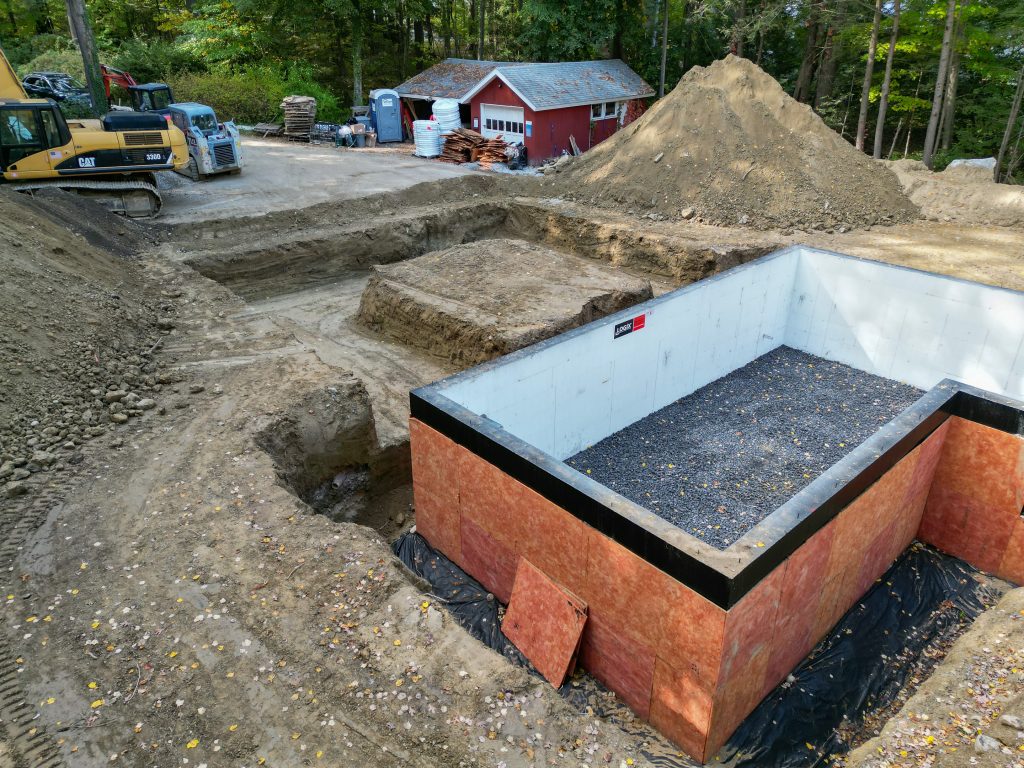
While we were in Turkey, progress on the house continued. The basement walls were waterproofed for a second time; the first application did not have time to cure before rain washed some of it away. Drainage tile was installed around the exterior and interior perimeters of the foundation, the later terminating in a sump pump basin. The initial plan was to connect these loops to each other and to have a sump pump discharge to a location outside the 100 foot river boundary (per stipulations of our natural resources permit), not a very elegant solution. After excavation, however, we discovered that the foundation will be surrounded by clay on three sides and sand on the river side. Clay, I have learned, is almost entirely impermeable which means that three sides of our foundation, if properly graded, should never come into contact with water. The fourth side will naturally drain through the sand into the river. Due to these conditions, we have decided that it will not be necessary to install a sump pump at all. The exterior loop will drain any water that makes its way past the clay down to the river side where it will filter through the sand and down to the river. This is a very ideal passive drainage system. There is, however, one scenario we needed to plan for. During a severe flooding event, should the river rise above the level of the basement floor, it will pass through the sand in the other direction and start to exert hydraulic pressure on the slab which, at some point, could cause it to buckle. In this case, water will enter the interior drainage loop and come up through the sump basin which will serve as a pressure relief valve. This will protect the slab at the expense of letting water into the basement. This may seem counter intuitive, but repairing water damage is far easier than repairing a failed foundation slab. Should the river ever reach this level, which is 22 inches above the 100-year floodplain, we will use a high capacity gas powered pump (20,000 GPH) to evacuate the sump basin. This should buy us another several inches, possibly a foot of margin. Hopefully, we will never have to find out how much. In a time of global climate change, however, it only makes sense to plan for more severe flooding events. Also completed while we were away was the installation and compacting of the Glavel base on which the 6″ basement slap will be poured. This morning I visited the site and insulated any remaining gaps in the ICF while excavation for the garage foundation was completed.
